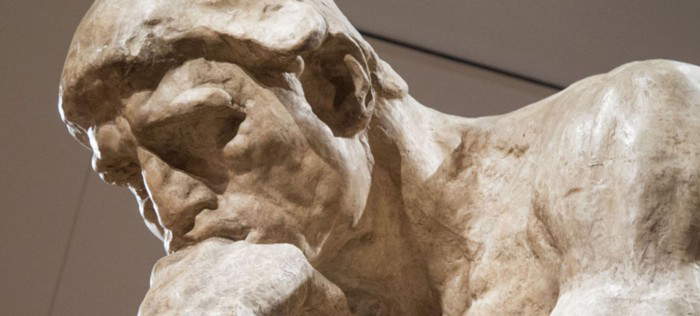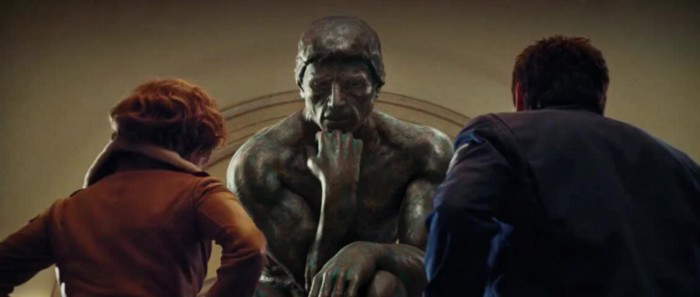In early January, my friend David Vuillaume, president of NEMO (Network of European Museum Organizations) posted a link to a study on museum professionals published by the German Museum Association. The study is helpful in confirming, once again, the ways and means by which the museum sector has expanded, internationally, over the past decade. Ten years ago, ICOM listed twenty museum professions then recognized as critical to the museum landscape. And this report cites fifty-six functions. In short, the developments that have taken place are truly impressive. All this was before the pandemic disrupted the entire world museum system. In that context that seems so distant now, the controversy of the day concerned, for example, the position of “Head of Coffee” at the Tate, which certainly helps a great deal to show that change and growth will not be smooth and linear. The Tate was quick to defend the position (and pay) of its “Head of Coffee.” “It is unfair,” they said, “to compare the head of a curatorial department with a head of another level. All departments at the Tate have a variety of roles with different responsibilities and different salaries, including curatorial roles. We value all of our staff and strive to pay employees appropriately for the work they do at the Tate.” These statements help confirm the unstable balance between traditional and new professions in the museum sector. Meanwhile, in mid-August the Tate let it be known that it would be laying off 300 employees from the food and bookshop services network it operates, with restaurants and cafeterias at the various sites scattered across Britain.
 |
| A detail of Auguste Rodin’s Thinker. |
Certainly, the restart will not be easy even if it comes down to the ability to completely set out to rethink the museum model all over again. And for sure, the museum landscape will continue to evolve perhaps a bit more quickly and incisively by reacting to the financial and economic necessities of the moment, seeking relevance and resilience to hold on to those ideals that have always defined the museum institution. Many will be the roles and skills needed for this revitalization. Some perhaps remain undefined as the situation continues to evolve. The new skills may also give rise to a number of tensions between the traditional museum professions and those that have yet to be fine-tuned, although the need for the latter should be recognized by the most forward-looking and knowledgeable institutions.
The “museum thinker” and his or her skills
I would like to add a role, a very important one, that has become of urgent need for museums today. I would define this job as museum thinker: I think the current museum landscape desperately needs it. In fairness, museums do have thinkers in their ranks, but they often end up getting bogged down in institutional roles that are seen as pressing and much more necessary. In fact, museums often do not have time to think about current events and the future, and how current events and the future should be thought about at the same time. All this often leads to “copy and paste” situations in which ideas are generated more in response to what seems to be working in the museum ecosystem rather than as a direct result of incubation and a bottom-up approach. In fact, innovation often comes from the bangs of the museum ecosystem rather than the majority currents.
Formalities often work against one’s need to be flexible, but sometimes they could be practical and useful--even when it comes to defining an abstract, out-of-the-box role like that of the museum thinker. We can think of at least three areas for which museum thinkers can contribute positively to the sustainable growth and development of the museum sector.
 |
| A still from the film A Night at the Museum (2006) |
1. Getting museum employees to think.
Let’s talk about it: many museum employees, especially if they are small or medium-sized museums, do not have the time to think about things that do not pertain to their daily needs and requirements. With the COVID-19 pandemic, the situation is even more critical. The more challenges museum think ers can come up with, the better the museum can position itself to embrace change, to recognize and address new trends, to continue to be relevant, and, most importantly, to continue to remain focused on the core values that shape and define it first and foremost.
2. Read the signs of the times
This is one of the most pressing needs affecting museums in the 21st century. Certainly relevance is not frozen in time: an institution might be relevant and alive in the present moment, but could become totally irrelevant in a month’s time. The pandemic has given an unthinkable rapidity to this.
Reading the signs of the times requires acumen, knowledge and sensitivity. It is something that goes beyond strategic planning and public programming and concerns the capacity for understanding as well as the ways and means by which museums can shape their future. Museum thinkers work best with museums that are forward-looking and motivated by a desire to innovate, and that are often not mainstream institutions or universal or international museums.
3. ... and monitor relevance.
Institutes often rely on internal control mechanisms to support resilience andaccountability in their management models. This is also the case for museum thinkers and museums.
The process behind museum thinking must be constant and enduring. It must look deep into the basic gears of the museum machine in order to ensure that the institution remains relevant by continually changing overly conservative practices on all operational levels. Through resilience monitoring, thinkers may be the best way to identify the risks of change and its limits to keep it constant.
These three values are inextricably linked. So we can really think about an all-encompassing description of these three jobs that have perhaps been underestimated or left on the sidelines. In any case, thinking does not mean procrastinating action.
Finally, I do not hide the awareness of which I became aware with this Italian version of my original article written for The Humanist Museum in early January. The pandemic made change more necessary than ever, accelerating the discussion that was already there before. The arguments have remained valid to this day. The pandemic has made them so even more so.
 |
| https://ars.electronica.art/error/en/think/ |
Warning: the translation into English of the original Italian article was created using automatic tools. We undertake to review all articles, but we do not guarantee the total absence of inaccuracies in the translation due to the program. You can find the original by clicking on the ITA button. If you find any mistake,please contact us.